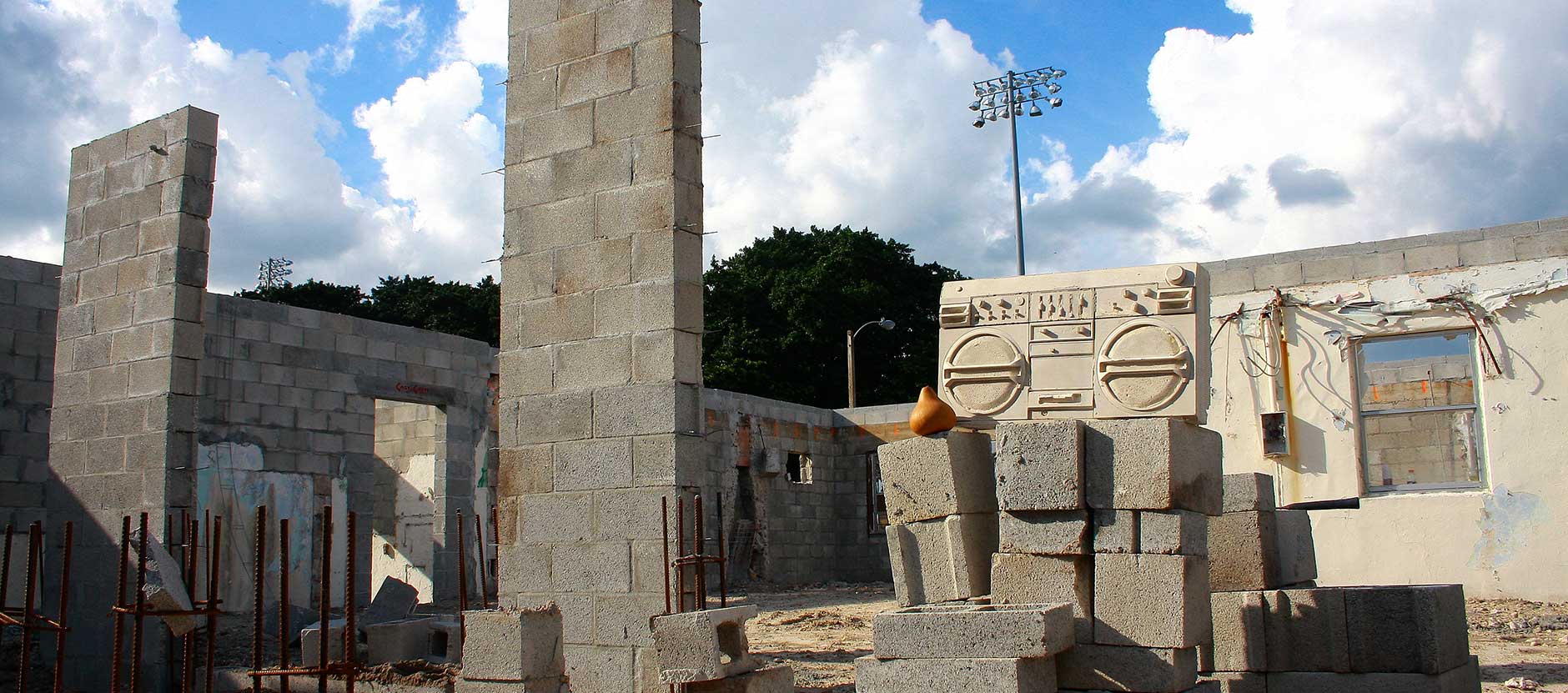WILLIAM CORDOVA
sacred geometries (rituél,םיסקט, rituales)
The sculptural monument sacred geometries (rituél,םיסקט, rituales) (2021) illuminates historical symbols in South Beach from 1970 to 1999 through a visually rich repository of the constantly transforming landscape.
The work is influenced by events such as the anti-Vietnam war civil disobedience demonstrations in Miami Beach at the 1972 Republican National Convention, singer Lou Reed’s 1973 arrest at the Miami Beach Auditorium for lewd and lascivious behavior, the national recession in the mid-70s that prompted economic disinvestment in real estate, and tourism’s decline, which left nightclubs and hotels abandoned in South Beach. Within those thirty years, Miami Beach, or more specifically Collins Avenue, became an intersecting hot bed of cultural diversity and viewpoints where Hassidic Jews, West Indians, Haitians, Anglo-Saxons, African Americans, Latinos, retirees, artists and LGBTQ communities thrived.
The late 70s and early 80s saw the confluence of snowbird retirees, a growing homeless population, needle parks and the politics of Cuban and Haitian refugees. Culturally, Collins Avenue was home to a multitude of overlapping music genres; punk, reggae, jazz, salsa, Rara and folk all thriving under one canopy. Misfits, musicians and visual artists found their idiosyncratic spaces and formed alliances within this unique landscape. Inadvertently documenting South Beach in the late 80s, the tv series Miami Vice (1984-89), captured the unique convergence of Art Deco architecture, excess and poly-sensory decadence. The 90s saw South Beach change, yet again, and with this, many of its culturally-rich avenues and residents were evicted by the rise of real estate investors and global tourism.
sacred geometries (rituél,םיסקט, rituales) utilizes geometric principles that consistently reappeared between 1970 and 1999 by casting everyday objects like milk crates, stools, wooden box transistor radios, boom boxes and “brick” cellphones in concrete. Each represents familiar communicative tools that would have been visible on Collins Avenue and surrounding throughways Alton Road, Jefferson Avenue and Washington Avenue. Together, these objects materialize the spaces, places and people, as well as the temporal and spatial rituals of this period.
On February 28, 1974, Tony Shafrazi entered the Museum of Modern Art in New York, went to the third floor, took out a can of red spray paint, and defaced Pablo Picasso’s anti-war masterpiece Guernica, (1937) after months of planning. Over the canvas, Shafrazi wrote the words “KILL ALL LIES,” both as a conceptual art gesture and a protest against the release on bail of the lieutenant convicted for his role in the My Lai massacre during the Vietnam War[1]. Asked about it later, Shafrazi stated he wanted to bring Guernica “absolutely up to date, to retrieve it from art history and give it life.”[2]
In May 2022, sacred geometries (rituél, םיסקט, rituales) (2021) was extensively graffitied. Rather than remove it, cordova embraced the tagging as an addition to the visual repository that the work represents. In his view, the unprovoked intervention “reflects the tenor of the times.”
____
1 How Tony Shafrazi Went from Vandalizing “Guernica” to Inventing a Market for Graffiti Art, Nate Freeman, Art Market, 2018 | 2 Two Coats of Painting, Jerry Saltz, Artnet.com 2008


